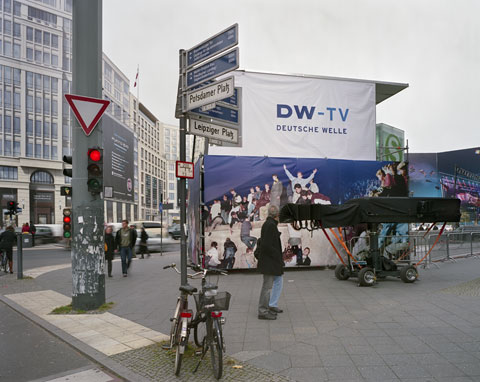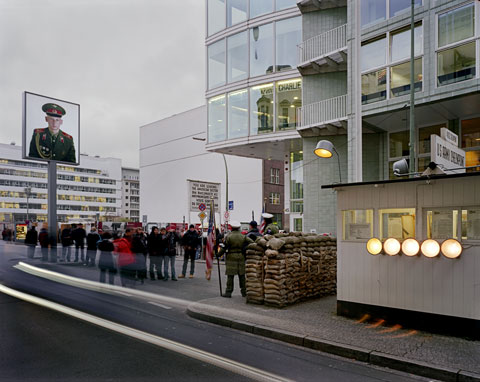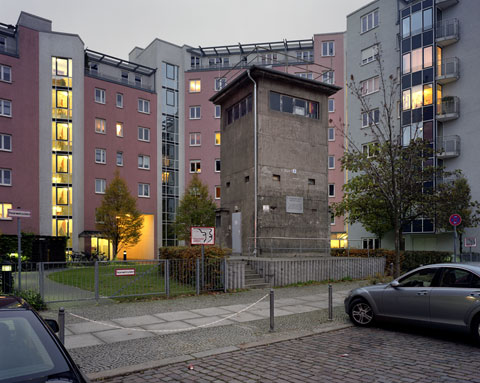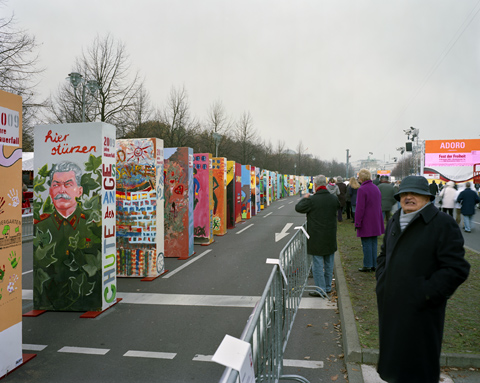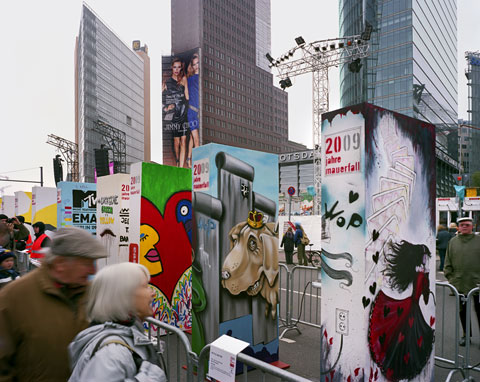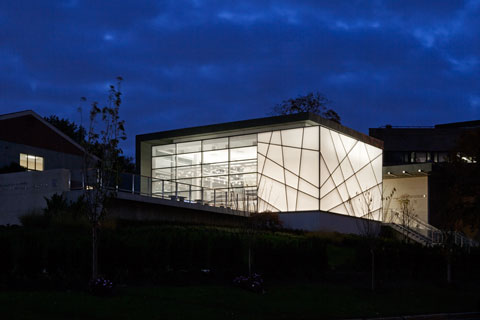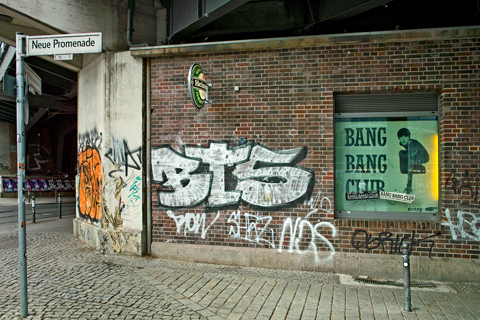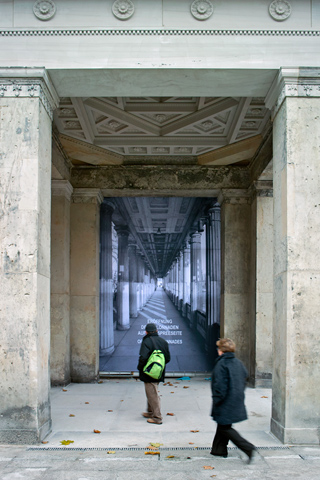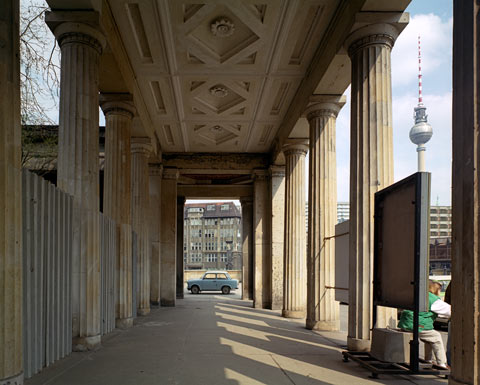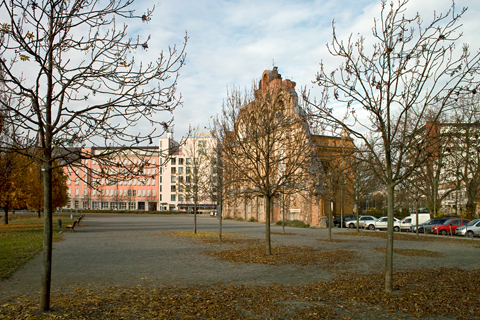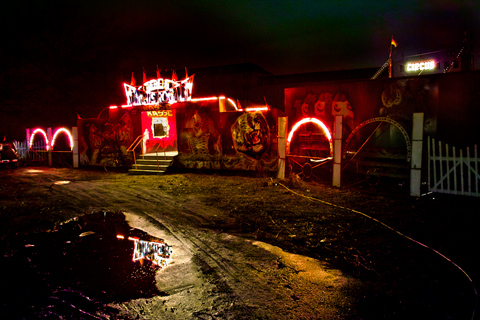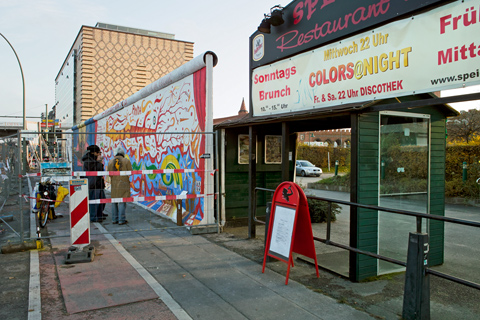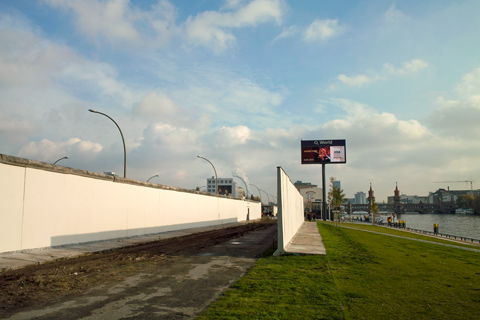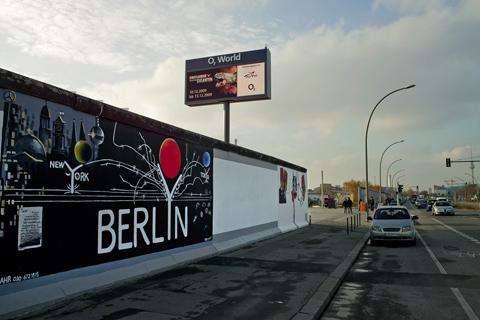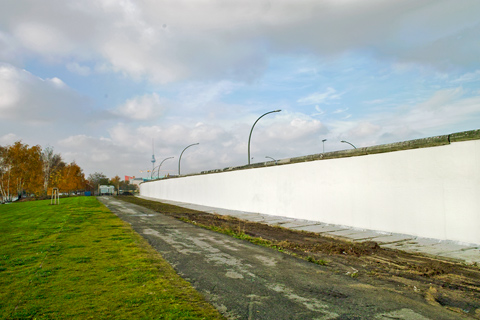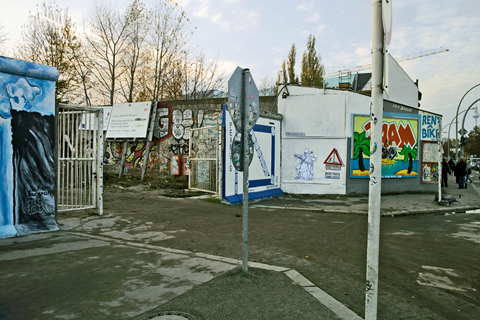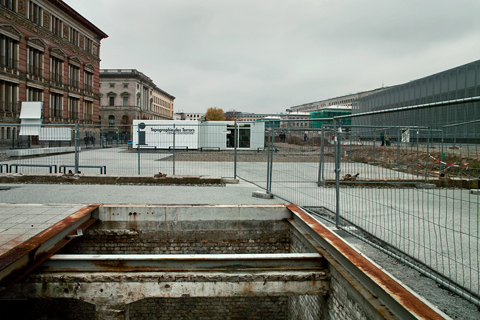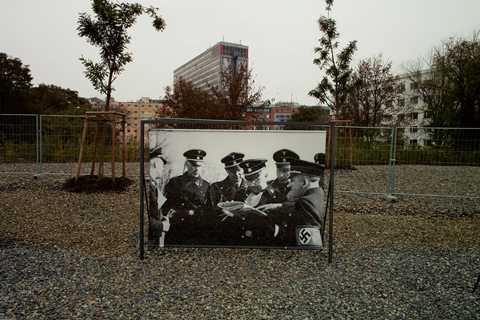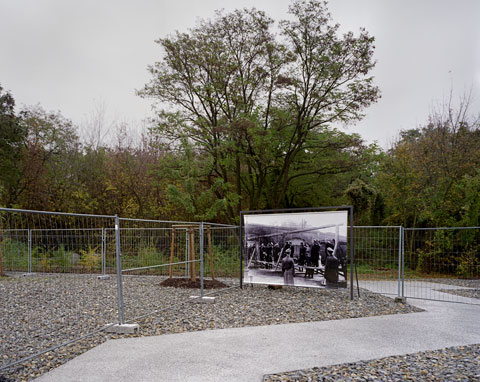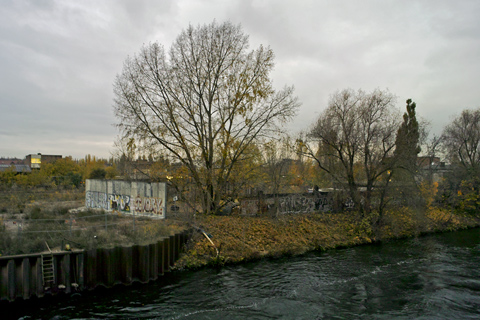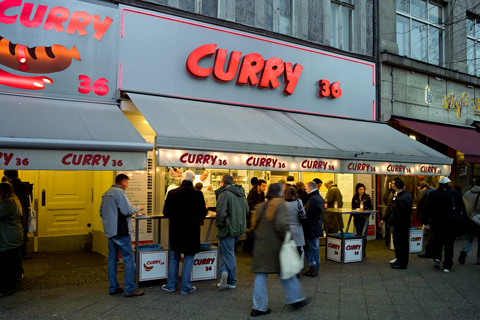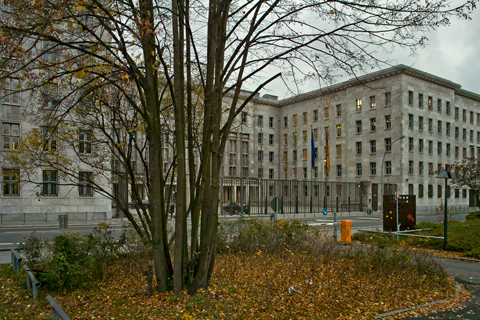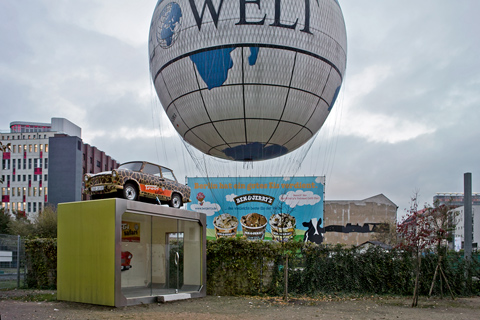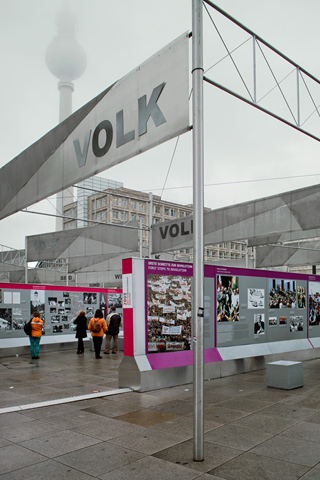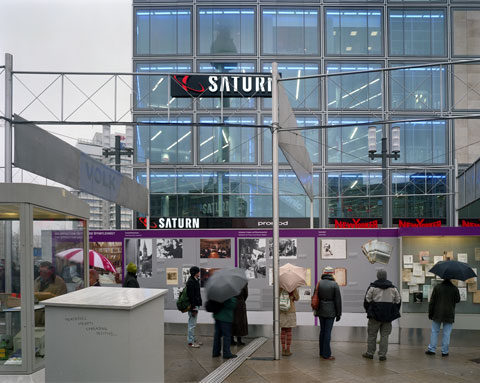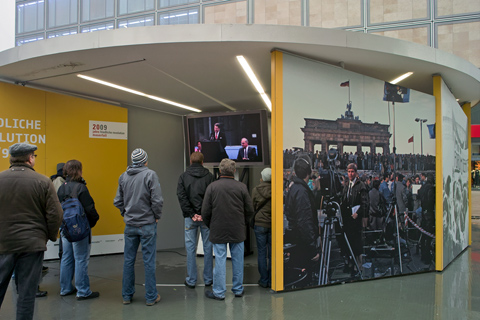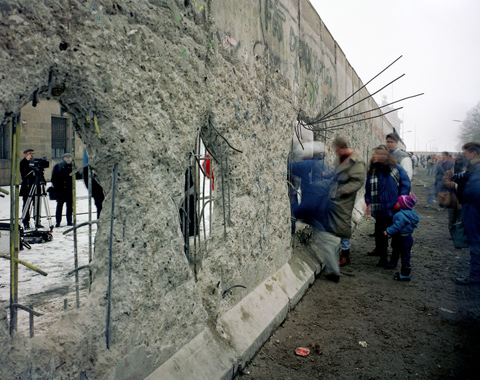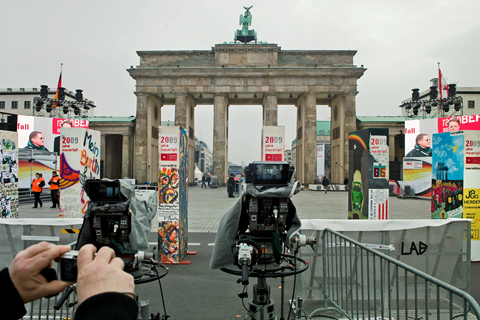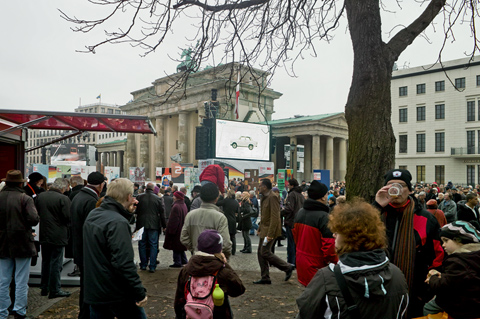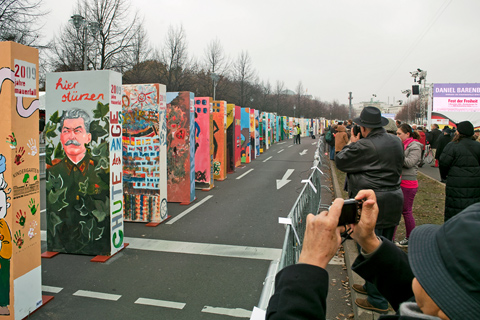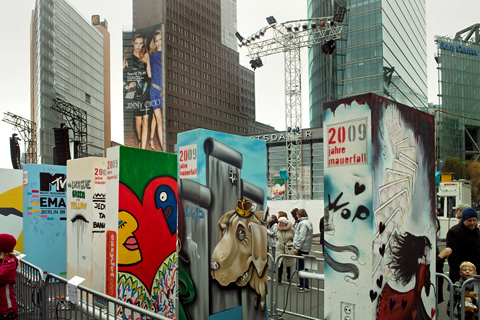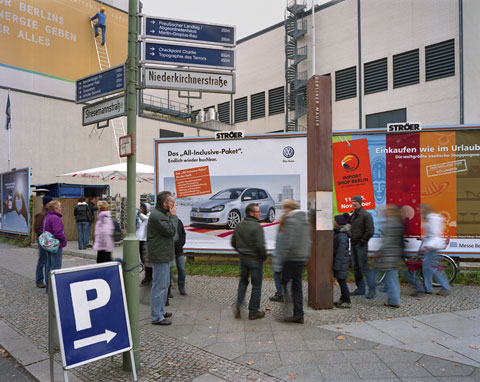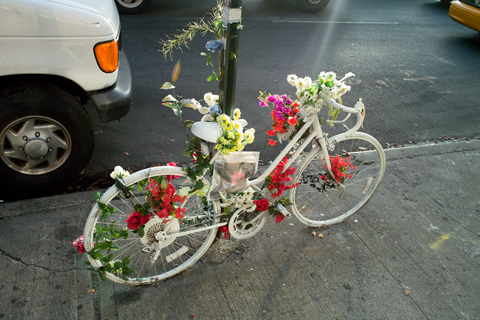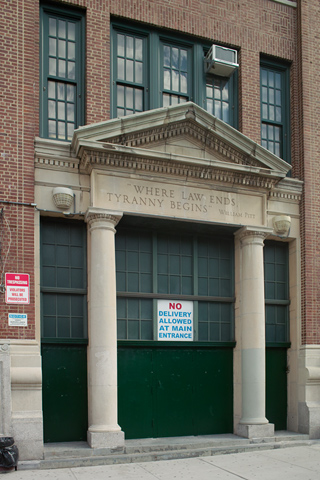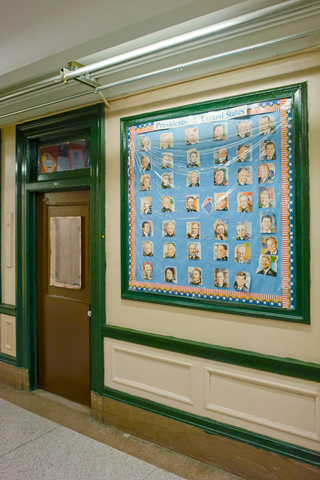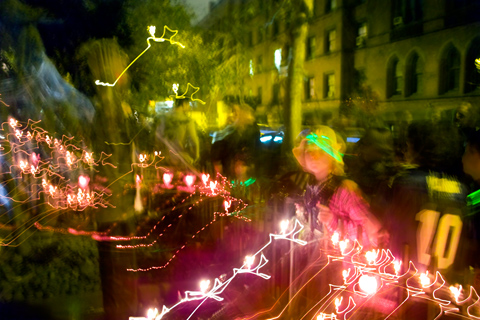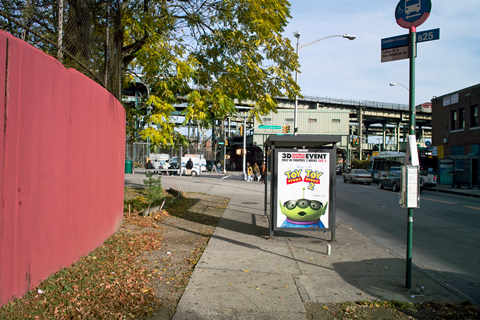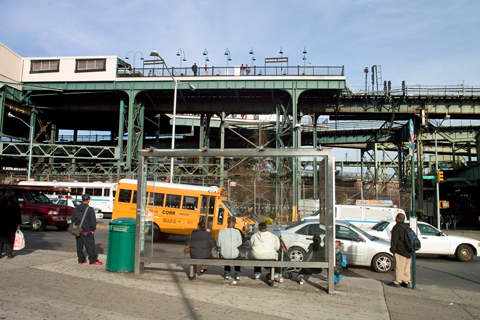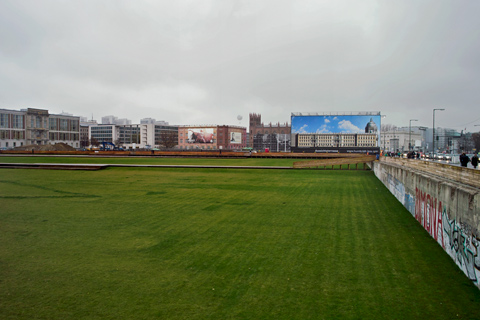
Palace site on Unter der Linden — © Brian Rose
Walking from Alexanderplatz, I headed down Unter den Linden, the grand boulevard of the city, passing by the now vacant site of the Palast der Republik, the former East German government and cultural building. Many hated it for its tacky architecture and what it symbolized–and the fact that it replaced the war damaged historic palace dating back to the 18th century. Many wanted it saved, however, as a piece of history on its own terms.
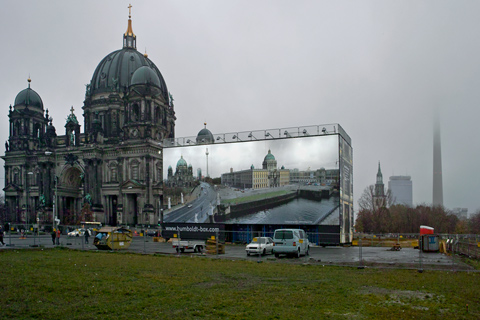
Palace and Berliner Dom — © Brian Rose
It was not saved, of course, and a re-creation of the original palace–at least several facades of it–will eventually be built. Meanwhile, large photo montages of the projected building are hung from the steel frame of a viewing platform.
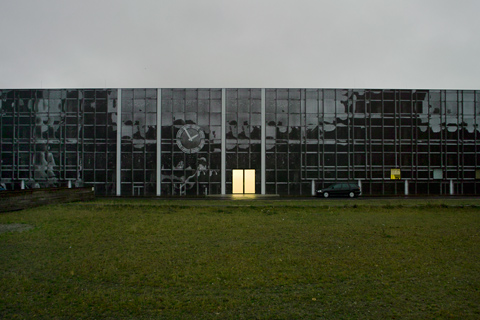
DDR Museum — © Brian Rose
Many such ephemeral buildings can be seen around the city, proposed structures, or hoped for construction, that await better times, printed on fabric and afixed to scaffolding. Directly next to the palace images, is another temporary structure with facades formed by a photo representation of the former Palast der Republik–in black rather than the bronze color of the original glass. It houses the DDR Museum.
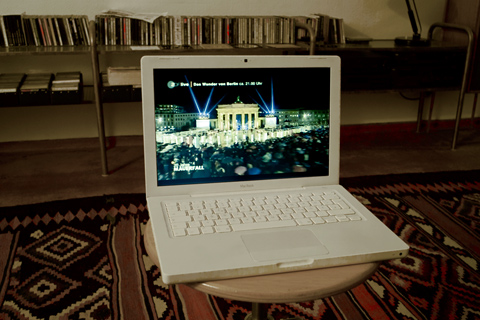
The Brandenburg Gate on TV — © Brian Rose
Eventually I made my way to the Brandenburg Gate where the 20th anniversary of the fall of the Berlin Wall was to take place. I took up a position next to the Holocaust Memorial in sight of one of a number of giant TV screens, and adjacent to the painted domino stones that were lined up between Potsdamer Platz and the Brandenburg Gate. Instead of showing live views of the scene around the Brandenburg Gate, or even time-killing commentary, we got to see commercials played over and over, leading one to wonder whether the fall of the Berlin Wall was worth it. OK, I exaggerate.
It began raining harder, and the program was, apparently, well behind schedule. Finally, having been out in the street all day in the rain with my view camera, I bailed out and ended up watching the speeches and falling dominos on a laptop connected to live TV. It was a curious event. Sort of a celebration, sort of a serious reflection on the meaning of freedom, with lots of hokey elements thrown in. Ther were speeches by Sarkozy, Brown, Merkel , and Hilary Clinton, as well as a taped White House address from Obama. Some have criticized Obama for not attending the anniversary event, but having witnessed the semi-chaos of the evening, the crush of people–it would have been a security and logistical nightmare. After the speeches, a German TV game show presenter interviewed Lech Walesa and Mikhail Gorbachev, and then Bon Jovi performed We Weren’t Born to Follow.
We weren’t born to follow
You gotta stand up for what you believe
Let me hear you say
Yea, Yea, Yea, ooooohhh, Yea
Update: As I returned home on the train from the airport, I saw a poster for Bon Jovi promoting their new book and new album featuring the song We Weren’t Born to Follow. It was then I realized how nakedly commercial the 20th anniversary event of the Mauerfall actually was.
